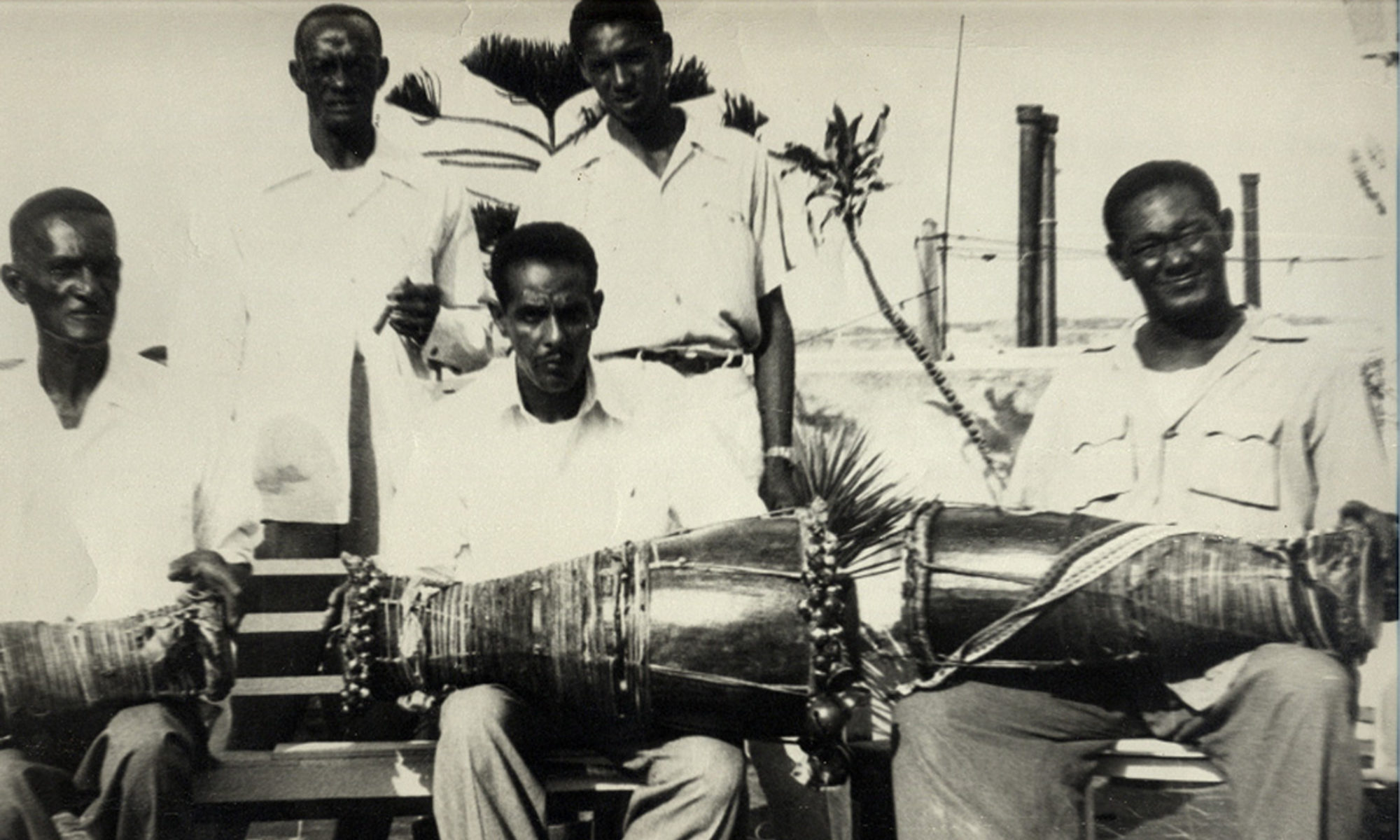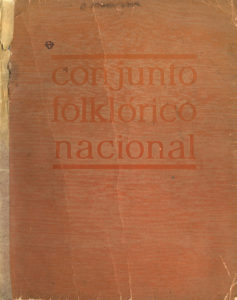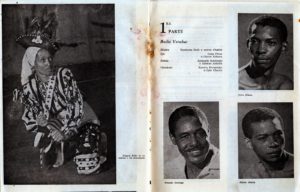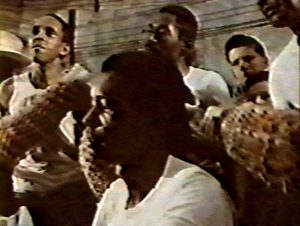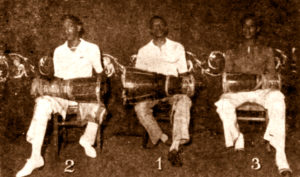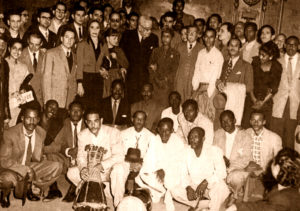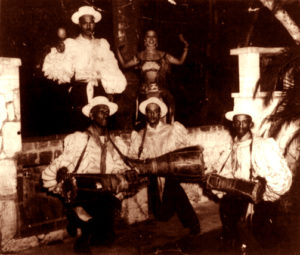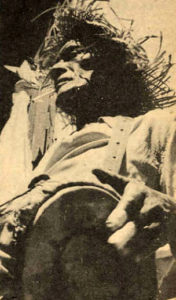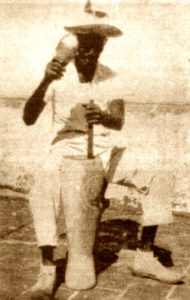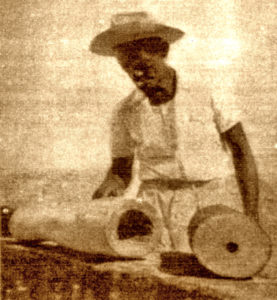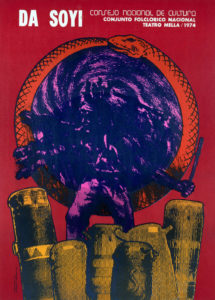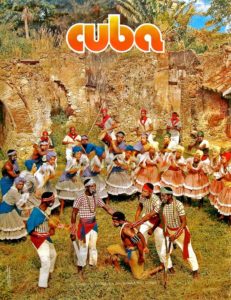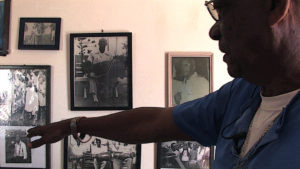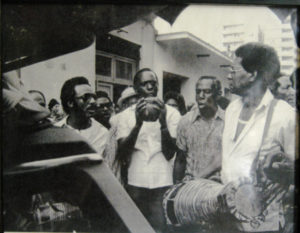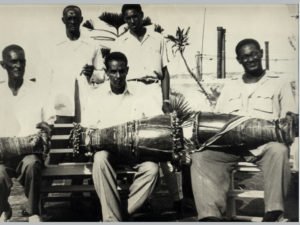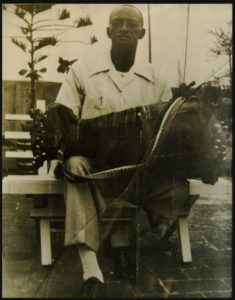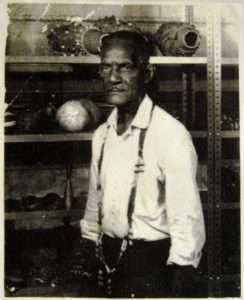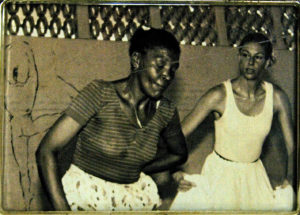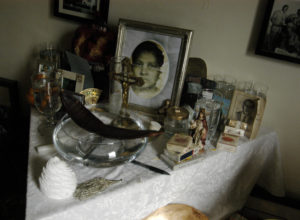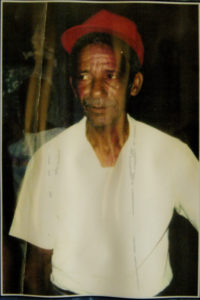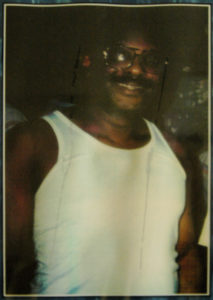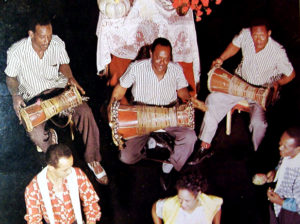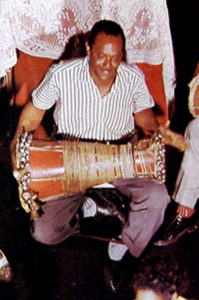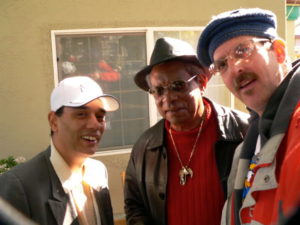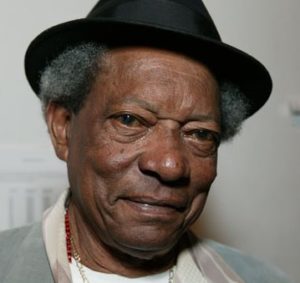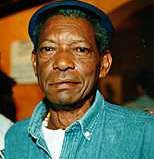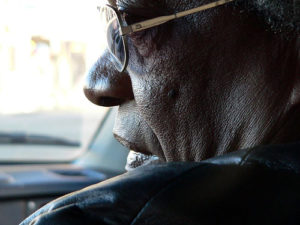About
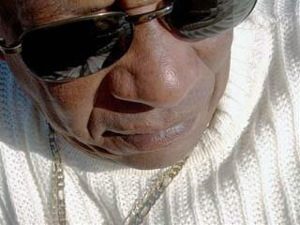 Carlos’s life has been dedicated to the teaching and the performance of Afro-Cuban music. This passion and commitment to the rich culture of Cuban people, has afforded him to teach and perform music throughout Europe, the Americas and Africa. Carlos Aldama now lives in San Leandro, CA and is available for lectures, consultations, private classes, performances and workshops.
Carlos’s life has been dedicated to the teaching and the performance of Afro-Cuban music. This passion and commitment to the rich culture of Cuban people, has afforded him to teach and perform music throughout Europe, the Americas and Africa. Carlos Aldama now lives in San Leandro, CA and is available for lectures, consultations, private classes, performances and workshops.
In 1999 Carlos was invited to California and awarded an Artist in Residence grant from the California Arts Council. He now lives in San Leandro, California where he continues to teach and perform Afro Cuban Folkloric music at schools, cultural centers and in his own home. He is also a central figure in the Yoruba religious community here in Northern California and is looked up to by many as a community leader. He is routinely “called in” as Akpwon for Afro Cuban Ana ceremonies in the Lukumi Santeria religion.
Carlos Lazaro Aldama Perez Carlos was born in Havana Cuba in 1938. His mother is of African ancestry, and father is mixed Chinese and African ancestry. He was brought up within the tradition and was recognized as a talented drummer from a very young age. Though he had a strong traditional education there were not many opportunities for young men of African ancestry prior to the Cuban Revolution (1959). After the revolution, this changed dramatically. Carlos was recognized for his depth of knowledge in African Diaspora culture and was invited to be a co-founder of the Ministry of Culture, Havana Cuba (1959). He then also became the co-founder of Conjunto Folklorico Nacional de Cuba (1962). CFNC was founded in order to preserve and pass on Cuba’s unique cultural heritage to future generations. Prior to CFNC Carlos worked with Fernando Ortiz. Fernando Ortiz is best known for bringing the Bata drums out of the religious setting for its first public appearance (1935). He also worked closely with Lydia Cabrera one of the most widely published scholars on Afro-Cuban Diaspora religions and producer of the historic Smithsonian Folkway Recordings (1956-57). The knowledge that he has was passed to him orally by his teacher Jesus Perez “Oba Ilu”. Jesus Perez was the original musical director of CFNC. After Jesus moved on, Carlos became the musical director for the next fifteen years of the total twenty-eight years in which he remained with CFNC. During that time he traveled the world with the group performing some of the most prestigious stages in the world, from Paris to Moscow, from Lima to Mexico City, New York to Toronto, Madrid to Florence, Varsovia to Argel, Accra to Kinshasa to name a few. Both the Cuban government and the Ministry of Culture have recognized Carlos for significant contribution to the richness and livelihood of Afro-Cuban traditions. He has also been awarded a Doctorate on Folkloric Percussion and has a degree from The School of Music Ignacio Servantes Institute of Superior Art (ISA) in Havana, Cuba.

Classes
Carlos lives in San Leandro California and is available for lectures, consultations, private classes, performances and workshops. contact him directly at: tel: 510.875.4157
Carlos Aldama leads an all levels Afro Cuban percussion class open to the public on saturday. He has extensive knowledge of Afro Cuban folkloric and popular music and is a patient and encouraging teacher; a rare combination! It is a real privilege to learn from him.

History
Afro-Cuban religion:
These new religions were born out of a blending of African cultures mixing with new traditions and circumstances encountered in the ‘New World’. African Peoples were brought to Cuba as slaves during the 16th through 19th centuries to work on the sugar plantations. These slaves carried with them their own religious traditions, including sacred drum and dance that used possession trance to communicate with ancestors, systems of divination and medicine.
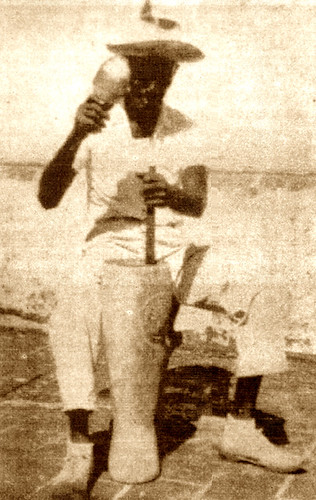 All of these religions can trace their roots back to separate ancestries in Africa. Santeria developed out of the traditions of the Yoruba, Palo from the Congo and Abakua from southern Nigeria among others.
All of these religions can trace their roots back to separate ancestries in Africa. Santeria developed out of the traditions of the Yoruba, Palo from the Congo and Abakua from southern Nigeria among others.
Another common name for Santeria in Cuba is Lucumi, a Yoruba word meaning friends. Lucumi is also the name given to descendants of Yoruba slaves in Cuba, as well as their music, dance and their Cubanized dialect of the Yoruba language.Residing within the Yoruba cosmology is the pantheon of deities called orisha. Orisha represent the primordial forces in nature, the various archetypal human personalities, and act as personal guardians or guides to initiates of the religion. During the ceremonies (called bembés), which involve music and dance, the orisha come to earth by possessing the bodies of mediums. In this way, the orisha are able to ‘live” amongst their followers, giving them blessings and guidance.
Cuba, in particular, still has a phenomenal amount of sacred Yoruba music and dance. In the time of slavery, owners purposely broke up the families of slaves and mixed together people from the different African ethnic groups as a way of maintaining control. However, in early 18th century Cuba the Spanish Catholic Church created mutual aid societies, called cabildos, as a medium of entertainment and reconstruction of many aspects of their ethnic heritage. There came to be Yoruba cabildos, Congo (Bantu) cabildos and Arara (Fon) cabildos in Cuba.
Religion and the Cuban revolution:
After the revolution of 1959 led by Fidel Castro, the new Cuban Government restricted religious practice. This had a more immediate effect on Christianity than it did on the African Diaspora religions (which were practicing in secrecy as a result of centuries of persecution from the church). From 1959 to 1961 eighty percent of the professional Catholic priests and Protestant ministers left Cuba for the United States.
The percentage of Afro- Cubans on the island also increased after the revolution due to an exodus of the largely white Cuban professional class. Afro-Cuban religion: These new religions were born out of a blending of African cultures mixing with new traditions and circumstances encountered in the ‘New World’. African Peoples were brought to Cuba as slaves during the 16th through 19th centuries to work on the sugar plantations. These slaves carried with them their own religious traditions, including sacred drum and dance that used possession trance to communicate with ancestors, systems of divination and medicine.
All of these religions can trace their roots back to separate ancestries in Africa. Santeria developed out of the traditions of the Yoruba, Palo from the Congo and Abakua from southern Nigeria among others. Another common name for Santeria in Cuba is Lucumi, a Yoruba word meaning friends. Lucumi is also the name given to descendants of Yoruba slaves in Cuba, as well as their music, dance and their Cubanized dialect of the Yoruba language. Residing within the Yoruba cosmology is the pantheon of deities called orisha.
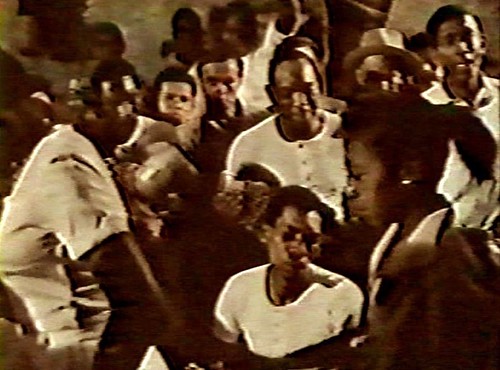 Orisha represent the primordial forces in nature, the various archetypal humanpersonalities, and act as personal guardians or guides to initiates of the religion. During the ceremonies (called bembés), which involve music and dance, the orisha come to earth by possessing the bodies of mediums. In this way, the orisha are able to ‘live” amongst their followers, giving them blessings and guidance. Cuba, in particular, still has a phenomenal amount of sacred Yoruba music and dance. In the time of slavery, owners purposely broke up the families of slaves and mixed together people from the different African ethnic groups as a way of maintaining control. However, in early 18th century Cuba the Spanish Catholic Church created mutual aid societies, called cabildos, as a medium of entertainment and reconstruction of many aspects of their ethnic heritage. There came to be Yoruba cabildos, Congo (Bantu) cabildos and Arara (Fon) cabildos in Cuba. Yoruba religious ceremonies were practiced and preserved in the cabildos of Cuba as the slaves seemingly synchronized their masters’ pantheon of Catholic saints with their own pantheon of orisha. Thus, the orisha covertly lived on in Cuba hiding behind a facade of Catholicism. In truth, these traditions did not exactly synchronize with Catholicism, but rather Catholicism was used as a camouflage behind which Yoruba religious practices took root and flourished.
Orisha represent the primordial forces in nature, the various archetypal humanpersonalities, and act as personal guardians or guides to initiates of the religion. During the ceremonies (called bembés), which involve music and dance, the orisha come to earth by possessing the bodies of mediums. In this way, the orisha are able to ‘live” amongst their followers, giving them blessings and guidance. Cuba, in particular, still has a phenomenal amount of sacred Yoruba music and dance. In the time of slavery, owners purposely broke up the families of slaves and mixed together people from the different African ethnic groups as a way of maintaining control. However, in early 18th century Cuba the Spanish Catholic Church created mutual aid societies, called cabildos, as a medium of entertainment and reconstruction of many aspects of their ethnic heritage. There came to be Yoruba cabildos, Congo (Bantu) cabildos and Arara (Fon) cabildos in Cuba. Yoruba religious ceremonies were practiced and preserved in the cabildos of Cuba as the slaves seemingly synchronized their masters’ pantheon of Catholic saints with their own pantheon of orisha. Thus, the orisha covertly lived on in Cuba hiding behind a facade of Catholicism. In truth, these traditions did not exactly synchronize with Catholicism, but rather Catholicism was used as a camouflage behind which Yoruba religious practices took root and flourished.
While the white slave owners observed the Africans celebrating a saint on his/her particular day, they were usually unaware that it was actually the orisha who was being worshiped. African-Diaspora Religion Today: African Diaspora Religions flourished in the Americas and the Caribbean. Today, the terms saint and orisha are used interchangeably in Cuba. The correlation of the Yoruba orisha with the Catholic saints is part of the island’s common culture. For example, Santa Barbara is understood to be the Yoruba orisha Changó, the god of thunder. San Lázaro is synonymous with Babalú Ayé, the orisha of infectious diseases. Consequently, the Yoruba religion in Cuba is often referred to as Santería, or the cult of the saints. Also, the Nigerian systems of divination, such as Ifá, remain intact in Cuba. In the last thirty years issues of secrecy and gender have been challenged greatly and the exchange of information and ideas within these traditions feels very exciting and alive. Carlos came here to teach music in cultural arts centers and universities. Carlos recounts “I was thinking my trip to California would be teaching and performing in schools and going back home, but I have found a complete life here and Afro Cuban religion and culture is thriving here too.”
